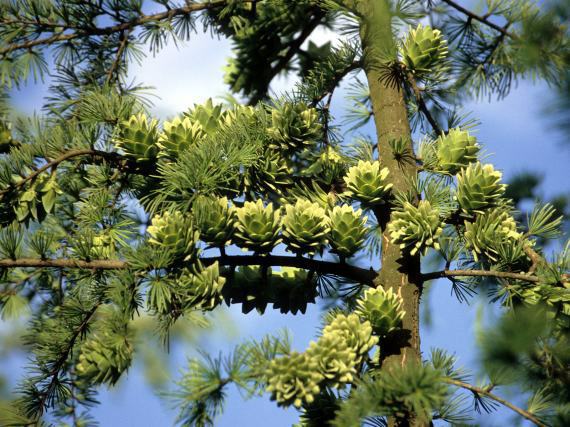Pseudolarix, as described in 1858 by George Gordon (1806 - 1879) in The Pinetum, is a monotypic genus of flowering trees in the family Pinaceae. The sole species, Pseudolarix amabilis, is commonly known as golden larch, though it is not a true larch (Larix), being more closely related to Keteleeria, Abies and Cedrus.
Golden larch is sometimes seen listed under an old scientific name Pseudolarix kaempferi, but this may cause confusion with Larix kaempferi, the Japanese larch.
Description. Golden larch is a deciduous coniferous tree that grows to mature heights of 100 to 135 feet (30 - 40 m) tall; with a broadly conic crown.
Distribution. This conifer is native to eastern China, occurring in small areas in the mountains of southern Anhui, Zhejiang, Fujian, Jiangxi, Hunan, Hubei and eastern Sichuan provinces, found growing at elevations of 350 to 5,000 feet (100 - 1,500 m) above sea level.
Golden larch is a very attractive ornamental tree for parks and large gardens. Unlike the true larches, it is very tolerant of summer heat and humidity, growing very successfully in the southeastern United States where most larches and firs do not succeed. In Europe, growth is most successful in the Mediterranean region with notable specimens in northern Italy; further north in the United Kingdom it will grow, but only very slowly due to the cooler summers.
This conifer has earned the Royal Horticultural Society's Award of Garden Merit.
